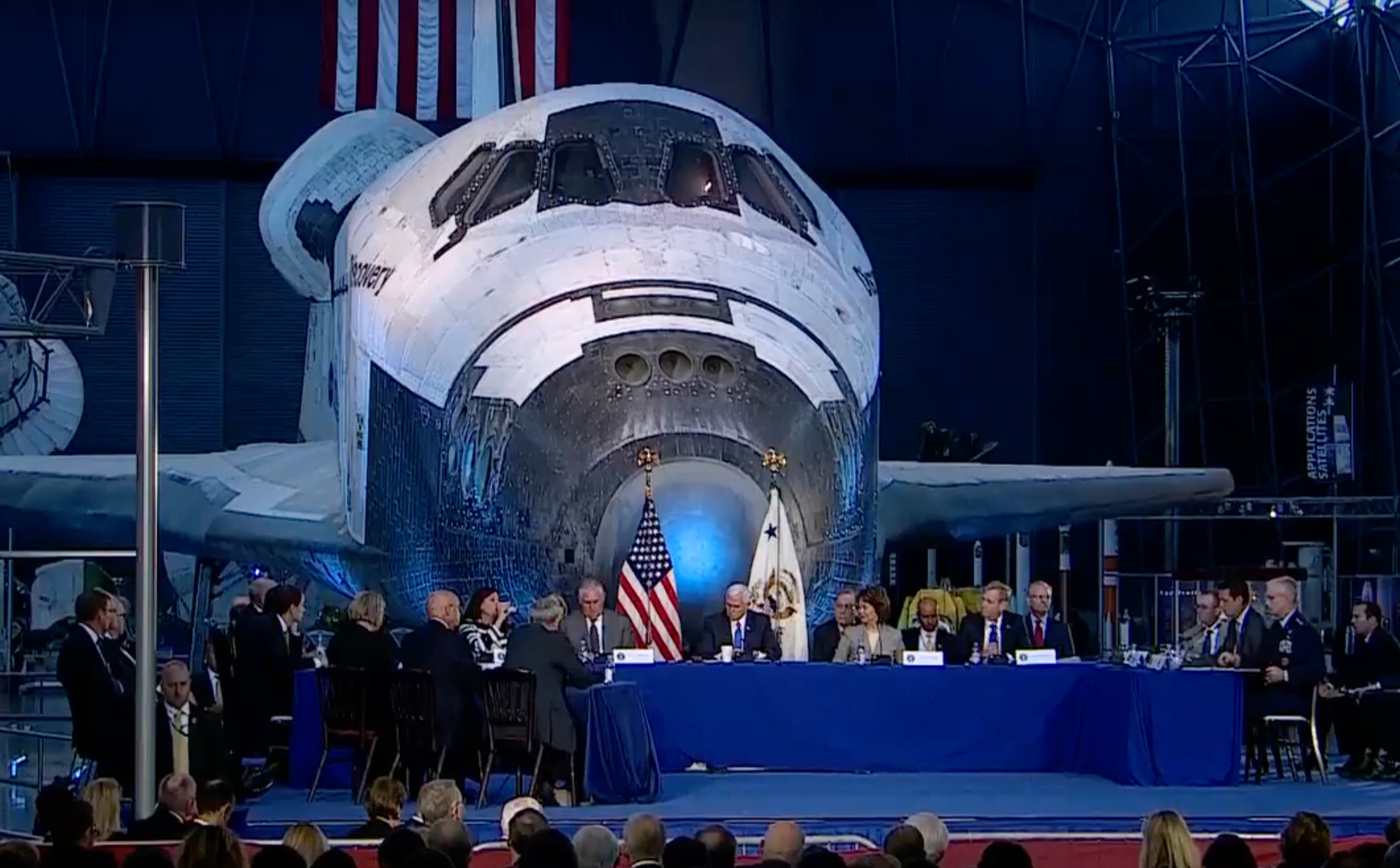

News
SpaceX urges White House to foster public-private partnerships in space
Earlier this year, the White House announced plans to reestablish the National Space Council (NSC), an advising body that dates back to the creation of NASA in 1958. The council convened for the first time on October 5 and invited several central figures in US spaceflight, including SpaceX’s President and COO Gwynne Shotwell.
In a brief but powerful speech to the Council, Shotwell urged the US Federal government to apply the lessons learned from NASA’s successful private-public partnerships to efforts to expand human presence in Low Earth Orbit and beyond. Those successful partnerships include NASA COTS (Commercial Orbital Transportation Services), which funded SpaceX to develop its Cargo Dragon spacecraft to resupply the ISS, and the Commercial Crew Program (CCP) that funded SpaceX for the development of their crewed Dragon 2 spacecraft. In terms of efficiency and speed, both programs have indeed been extraordinarily successful, despite often maligned delays.
As a brief example of the insignificance of SpaceX’s Commercial Crew delays, one needs to look no further than NASA’s Space Launch System. Described in early 2011 to be pursuing operational readiness no later than December 2016, SLS is now extremely unlikely to conduct its first launch until well into 2020. A reasonable cost estimate spreads the development costs ($30 billion) over 30 years of operations, assumes an optimistic one launch per year for the vehicle, and arrives at an astounding final figure of $5 billion per SLS launch.
The development funds NASA awarded SpaceX for both Cargo Dragon, Falcon 9, and Crew Dragon were estimated to be no more than $7.3 billion from 2006 to the last Cargo Dragon mission currently scheduled for 2024. Even if this figure swells to $10 billion once operational crewed flights to the ISS begin in 2018 or 2019, the entire cost of NASA’s support of SpaceX would equate to two launches of SLS total.
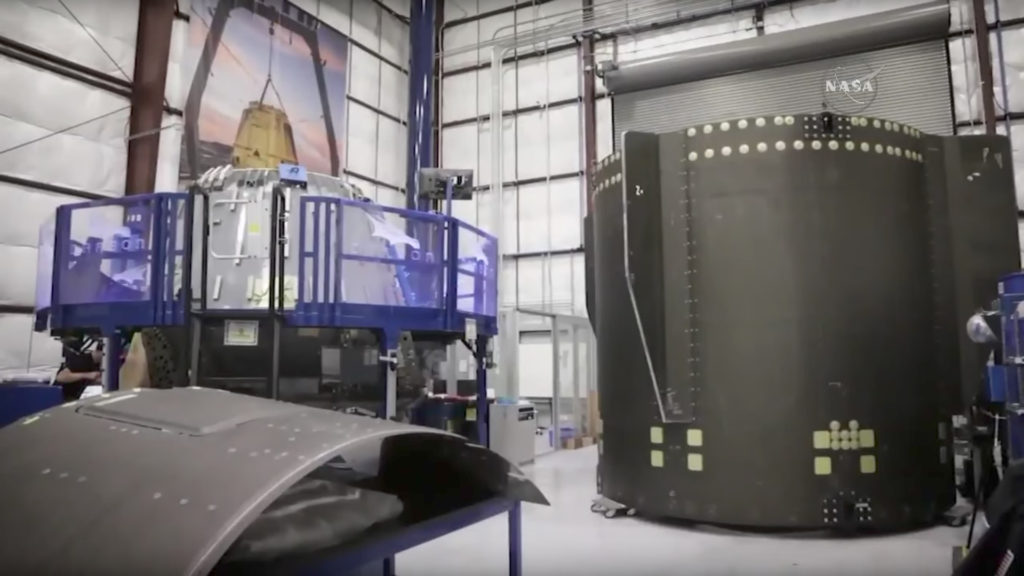
NASA slipped a sly glimpse of Dragon 2 construction into their live coverage SpaceX’s CRS-12 launch. On the left is a Dragon 2 pressure vessel, while on the right is the vehicle’s “trunk”. (NASA)
Shotwell made sure to avoid the topic of SLS entirely, instead choosing to highlight the benefits of cost and speed public-private partnerships could provide for deep space communications and interplanetary cargo transport. This marks the second time that a ranking member of SpaceX has mentioned a possible public-private program for deep space communications, something that will inevitably need to improve as the commercial spaceflight apparatus extends its reach beyond Earth. SpaceX is currently developing satellite technology to enable a massive orbital Internet constellation around Earth, and the company is obviously interested in leveraging that R&D to strengthen Earth-Mars and Earth-Moon networks into a more robust communications backbone. Secretary of Transport Elaine Chao and Secretary of State Rex Tillerson also slipped in words of excitement and interest in SpaceX’s recently revealed concept of point to point Earth transportation with their BFR system.
This meeting of the NSC also focused heavily on the domestic and regulatory apparatus for commercial space operations. Shotwell and Blue Origin’s CEO Bob Smith both suggested that the FAA’s current rules and regulations regarding commercial spaceflight ought to be reviewed and potentially updated to better account for a future of reusable commercial launch vehicles. Shotwell subtly maligned the often-tedious process of applying for FAA launch permits, pointing to the fact that even slight changes to permits would force companies to file entirely new applications, often taking six months or longer. SpaceX, with its rapid development and deployment of reusable rockets and an ever-increasing launch cadence, is more than ever before at odds with the FAA’s slow and unforgiving permitting processes.
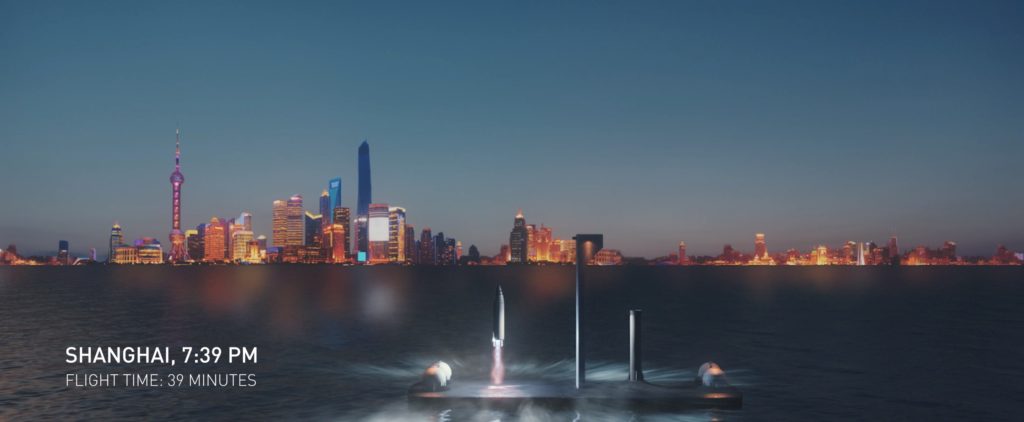
SpaceX’s BFR Earth transport concept would undoubtedly clash head-on with the FAA’s current system of rocket regulations. (SpaceX)
Intriguingly, Council members Mike Pence, Mick Mulvaney, and Elaine Chao all expressed a desire to ease the burden of anachronistic regulations on the commercial space industry. More interesting still, the commercial space panel ended with what effectively sounded like a handshake deal between the Vice President, the Secretary of Transportation, and the Director of the Office of Management and Budget to review current commercial spaceflight regulations and report the results of those reviews to the NSC in no more than 45 days.
It remains to be seen if this verbal commitment translates into an official review, but it is at a minimum encouraging to hear ranking members of the current White House administration so openly express support for SpaceX, Blue Origin, Sierra Nevada Corp., and American commercial spaceflight in general.
The First Meeting of the National Space Council can be seen in the embed below.
https://www.youtube.com/watch?v=nh2jVG76S7g
News
Tesla Robotaxi has already surpassed Waymo in this key metric
Tesla Robotaxi has already overtaken Waymo in Austin in one key metric, but there’s still more work to do.

Tesla Robotaxi has already surpassed Waymo in one extremely important key metric: size of service area.
Tesla just expanded its service area in Austin on Monday morning, pushing the boundaries of its Robotaxi fleet in an interesting fashion with new capabilities to the north. Yes, we know what it looks like:
🚨 Tesla’s new Robotaxi geofence is…
Finish the sentence 🥸 pic.twitter.com/3bjhMqsRm5
— TESLARATI (@Teslarati) July 14, 2025
The expansion doubled Tesla Robotaxi’s potential travel locations, which now include the University of Texas at Austin, a school with over 53,000 students.
The doubling of the service area by Tesla has already made its travel area larger than Waymo’s, which launched driverless rides in October 2024. It became available to the public in March 2025.
According to Grok, the AI agent on X, Tesla Robotaxi’s current service area spans 42 square miles, which is five square miles larger than Waymo’s service area of 37 square miles.
Tesla Robotaxi (red) vs. Waymo geofence in Austin.
Much can be said about the shape… but the Robotaxi area is now ~3.9 mi² (10 km²) larger than Waymo’s!! pic.twitter.com/dVfh2ODxJC
— Robin (@xdNiBoR) July 14, 2025
The service area is one of the most important metrics in determining how much progress a self-driving ride-hailing service is making. Safety is the priority of any company operating a ride-hailing network, especially ones that are making it a point to use autonomy to deploy it.
However, these companies are essentially racing for a larger piece of the city or cities they are in. Waymo has expanded to several different regions around the United States, including Arizona and Los Angeles.
Tesla is attempting to do the same in the coming months as it has already filed paperwork in both California and Arizona to deploy its Robotaxi fleet in states across the U.S.
As the platform continues to show more prowess and accuracy in its operation, Tesla will begin to expand to new areas, eventually aiming for a global rollout of its self-driving service.
News
Tesla Megapacks arrive for massive battery replacing coal plant
Tesla Megapacks have started arriving on-site to the Stanwell Battery Project, just as Queensland prepares to wind down the Stanwell coal plant.
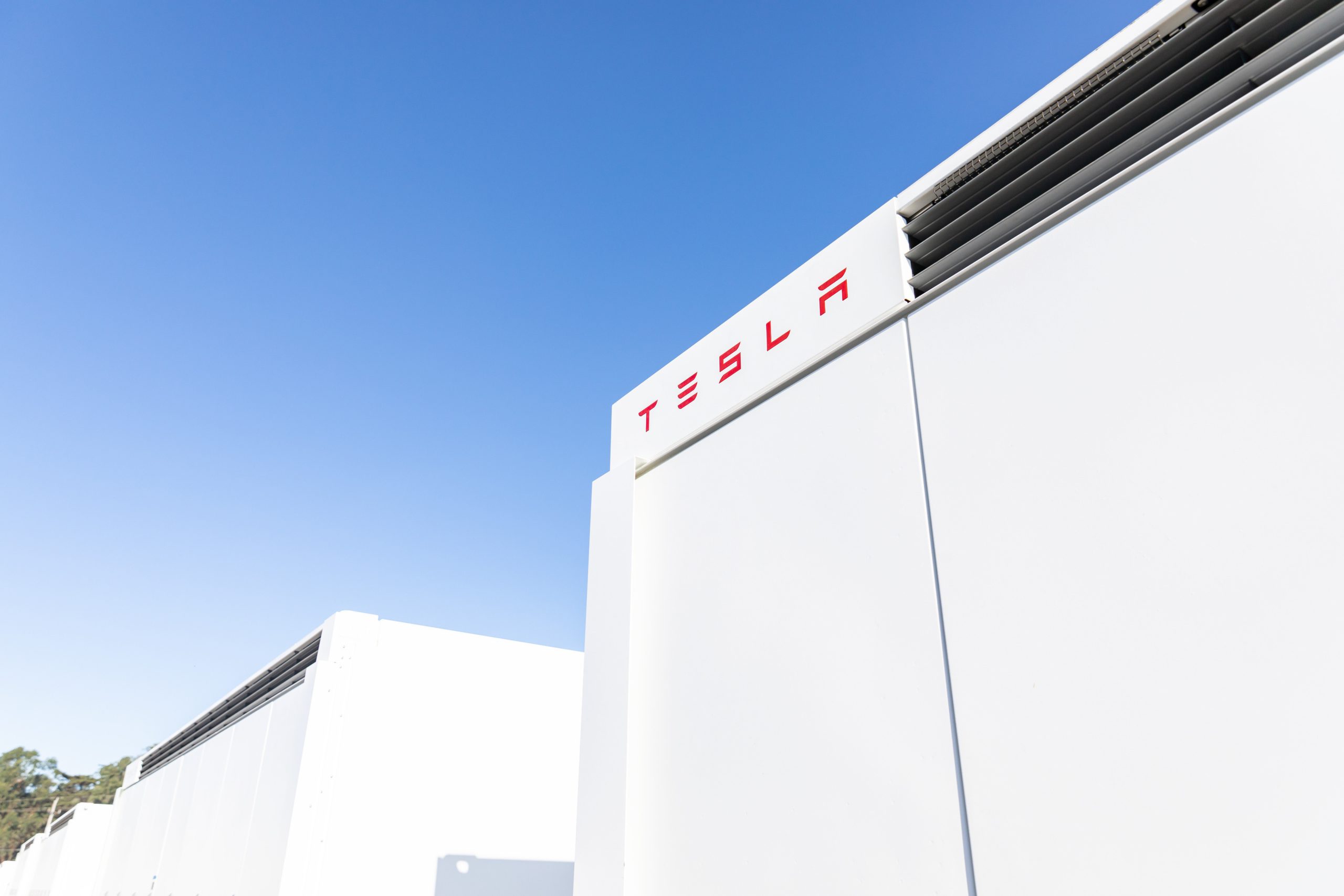
The first of over 300 Tesla Megapacks have arrived to the site of a massive battery energy storage system (BESS) being built in Australia, dubbed the Stanwell Battery Project after a coal plant it’s set to replace.
In a press release last week, the Stanwell Battery Project announced that the first Tesla Megapack 2XL units had arrived to the site, which is located outside of Rockhampton in Queensland, Australia. The project will eventually feature 324 Megapack units, set to arrive in the coming months, in order to support the 300MW/1,200MWh battery project.
“The Stanwell Battery is part of the diversification of our portfolio, to include cleaner and more flexible energy solutions,” said Angie Zahra, Stanwell Central Generation General Manager. “It is just one part of the 800 MW of battery energy storage capacity we have in our pipeline.
“Capable of discharging 300 MW of energy for up to four hours (1,200 MWh), our mega battery will be one of the largest in Queensland.”
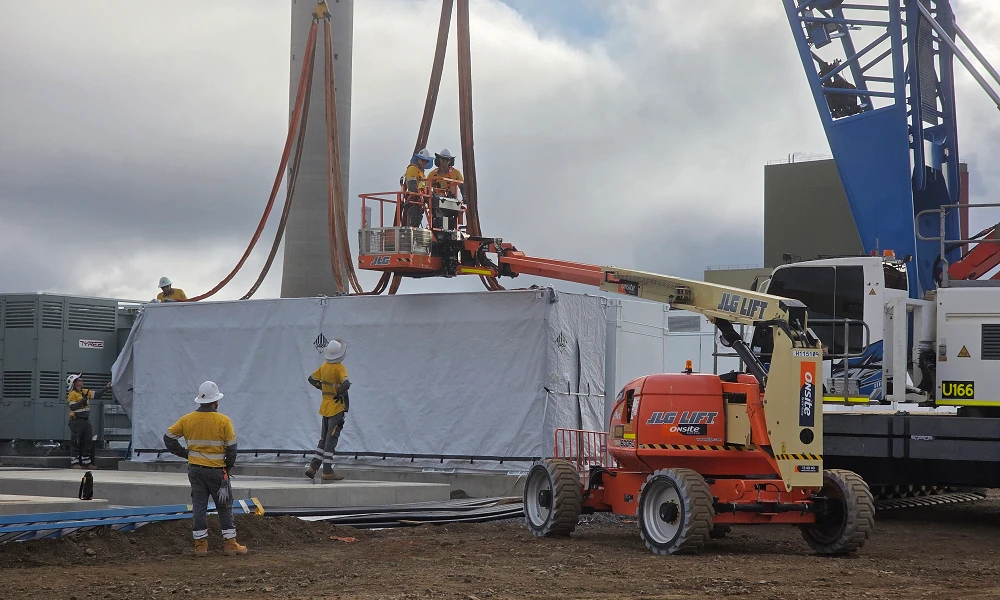
Credit: Stanwell
Did you know Tesla’s Lathrop facility churns out a Megapack every 68 minutes? That’s enough energy to power 3,600 homes for an hour per unit! ⚡️ pic.twitter.com/bG6fpHkB9O
— TESLARATI (@Teslarati) June 11, 2025
READ MORE ON TESLA MEGAPACKS: Tesla Lathrop Megafactory celebrates massive Megapack battery milestone
The state is working with government-owned company Yurika to facilitate construction, and the process is expected to create roughly 80 jobs. The project is expected to come fully online in May 2027, with initial commissioning of the Megapacks aiming for November 2025.
The Stanwell Battery is set to replace the nearby Stanwell coal generation plant, which the government is planning to wind down starting in 2026 as part of efforts to reach an 80 percent renewable energy generation ratio by 2035. Meanwhile, the government is also set to begin winding down the Tarong and Callide coal plants, while several other Megapack projects are being built or coming online. o ya
Tesla currently has two Megapack production facilities, located in Lathrop, California, in the U.S. and another that came online earlier this year in Shanghai, China. The Shanghai Megafactory shipped its first units to Australia in March, while both factories are expected to be capable of producing 10,000 Megapack units per year upon reaching volume production.
News
The Tesla Diner is basically finished—here’s what it looks like
The company first broke ground on the Diner, Drive-in, and Supercharger location in September 2023. Now, it has served one of its first internal customers.

Tesla has finally completed the construction of its highly anticipated Diner, Drive-in, and Supercharger in Los Angeles, and recent photos of the interior’s “retro-futuristic” style are making their way around the internet.
X user Brad Goldberg shared photos from the Tesla Diner site last Tuesday, depicting some of the Supercharger stalls, indoor and outdoor seating areas, multiple neon lights, and even an Optimus robot. Goldberg also noted that there had been a “flurry of activity on site” while he was snapping the photos last week, suggesting that the restaurant location could be getting close to opening.
The Tesla Diner also served one of its first internal customers in the past few days, as Elon Musk posted on X on early Monday morning that he had just finished up eating a meal at the site:
I just had dinner at the retro-futuristic Tesla diner and Supercharger.
Team did great work making it one of the coolest spots in LA!
The photos also show that the site is pretty much done, with some of them even showing vehicles charging at the charging stalls.
You can see some of the latest photos of the Tesla Diner below.
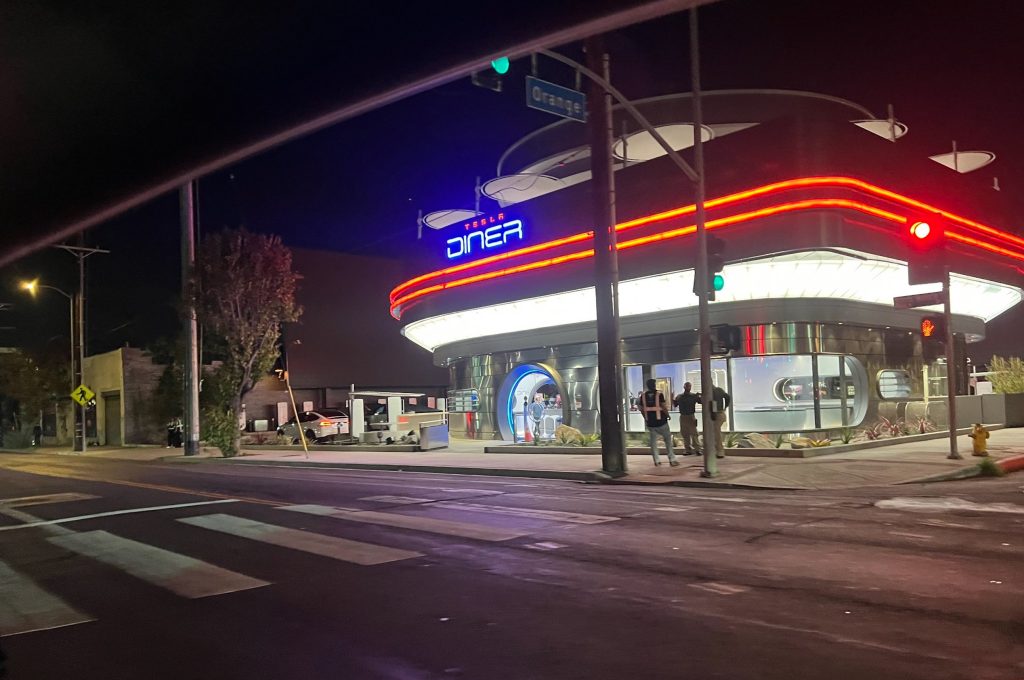
Credit: BradGoldbergMD | X
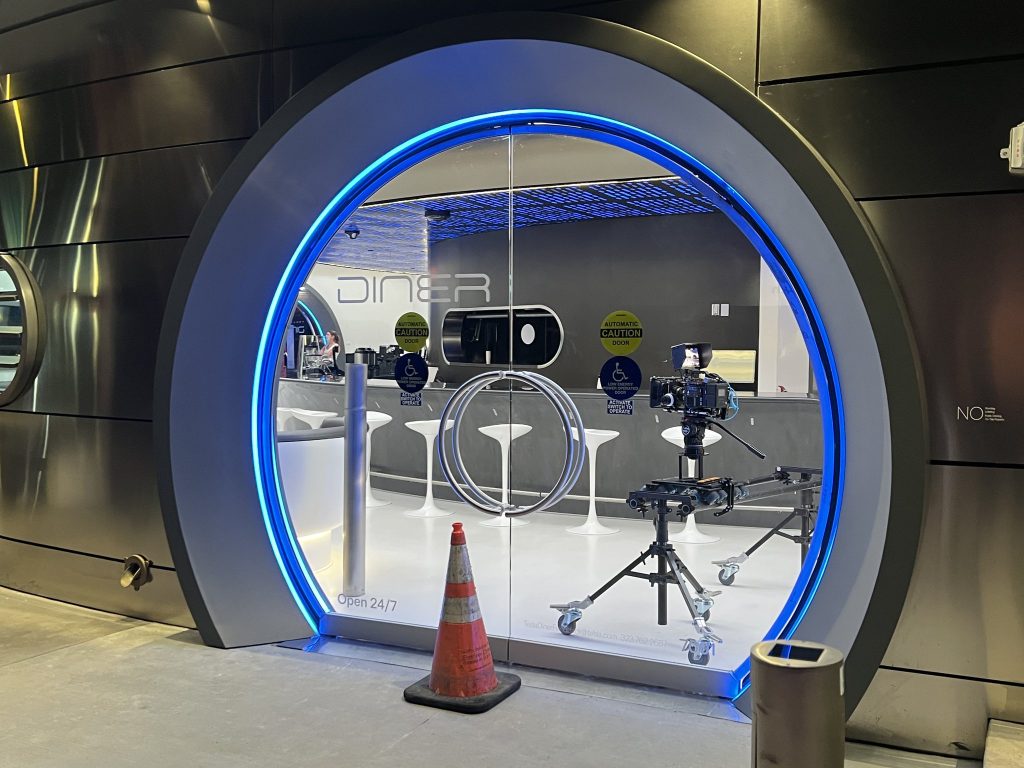
Credit: BradGoldbergMD | X
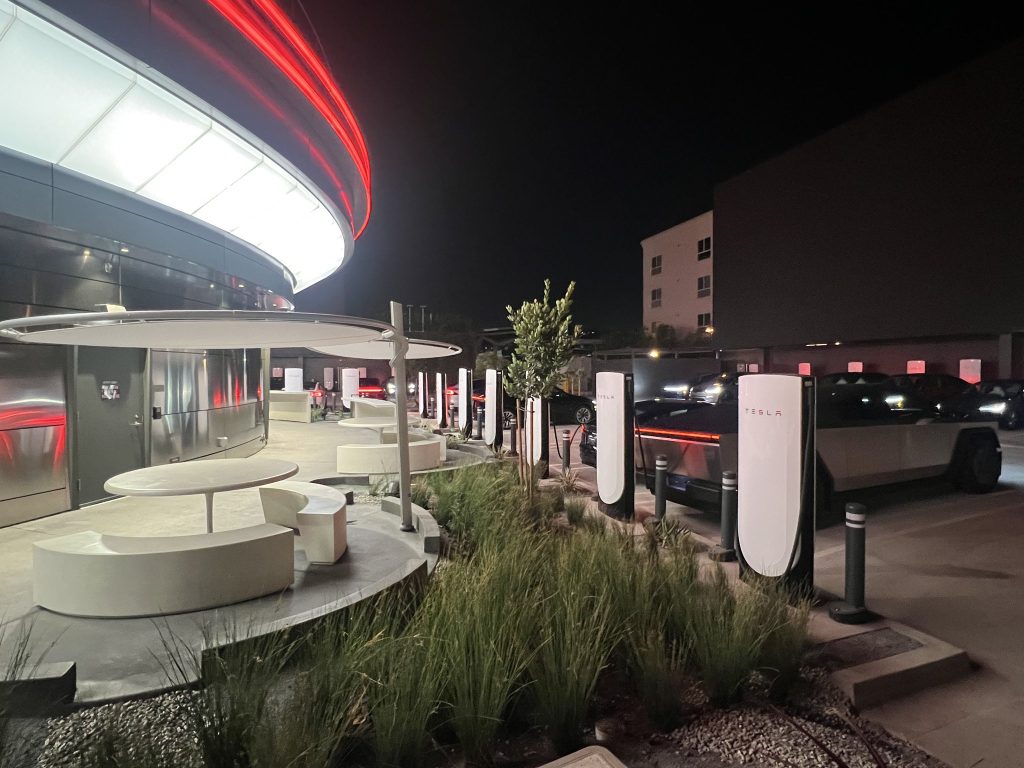
Credit: BradGoldbergMD | X
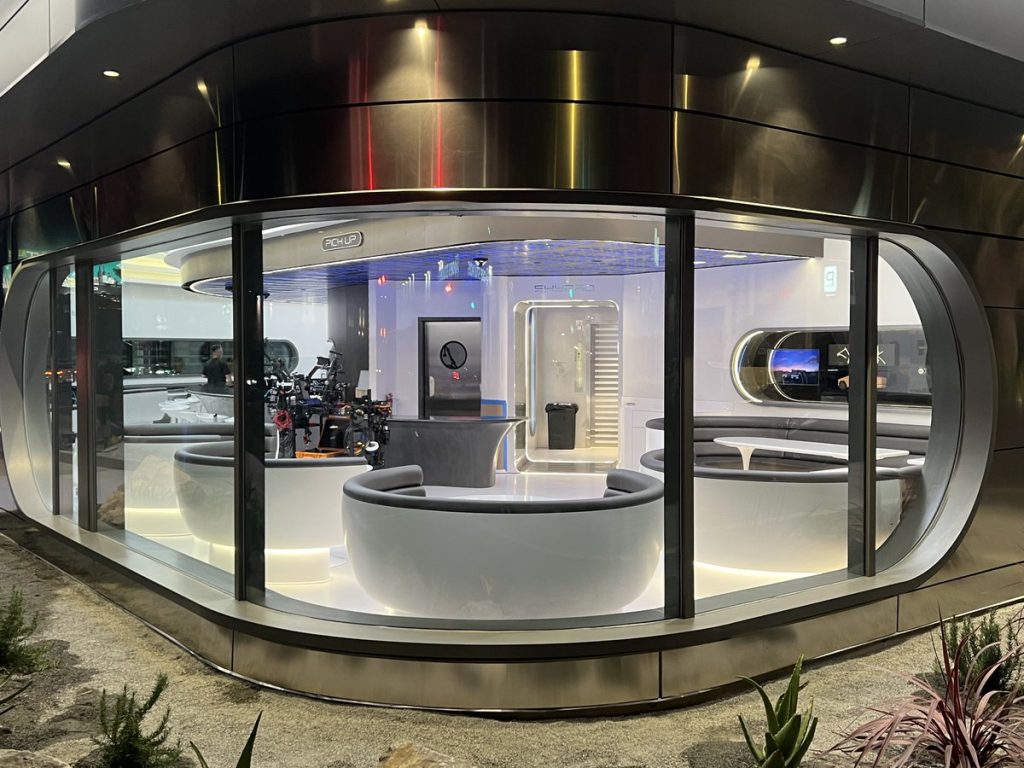
Credit: BradGoldbergMD | X
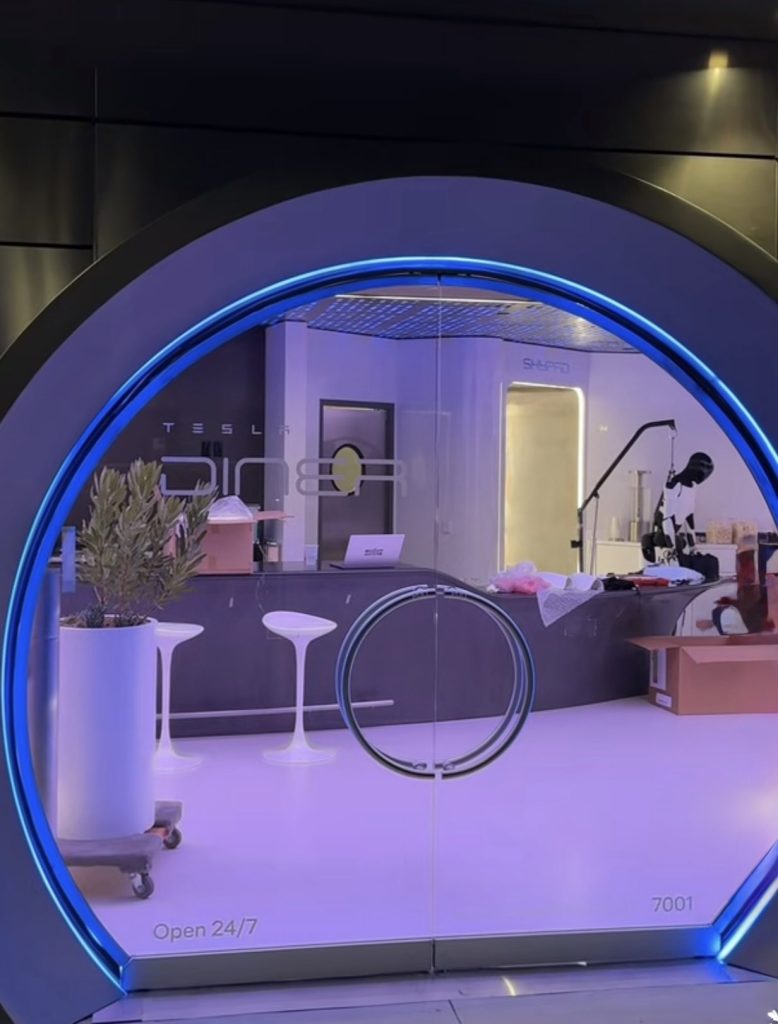
Credit: TeslaKing420 | X
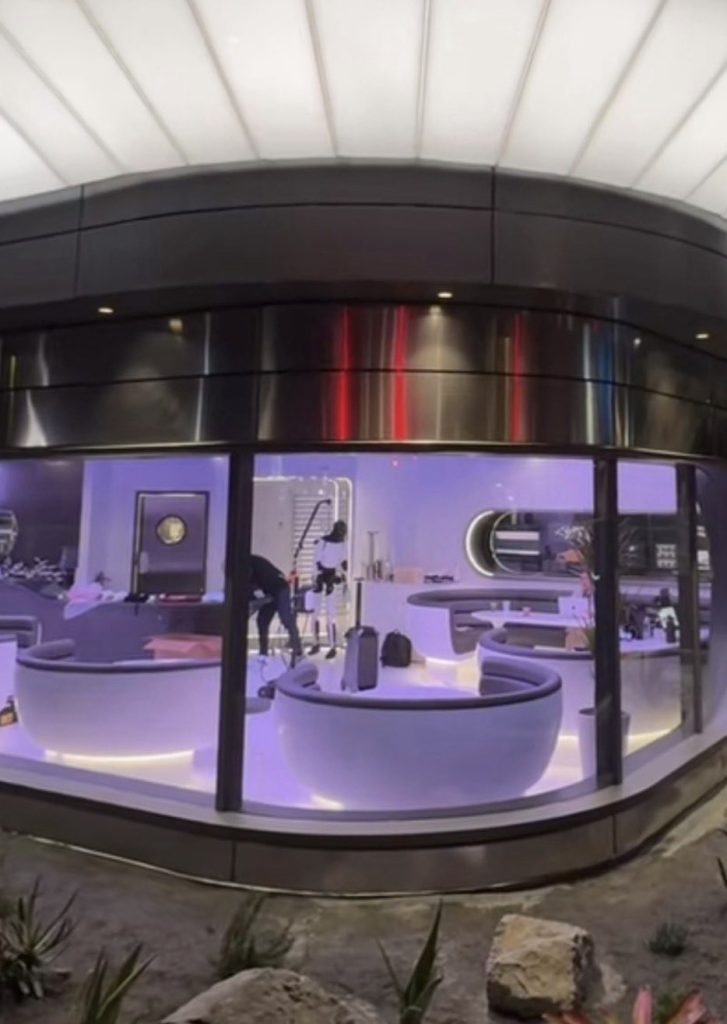
Credit: TeslaKing420 | X
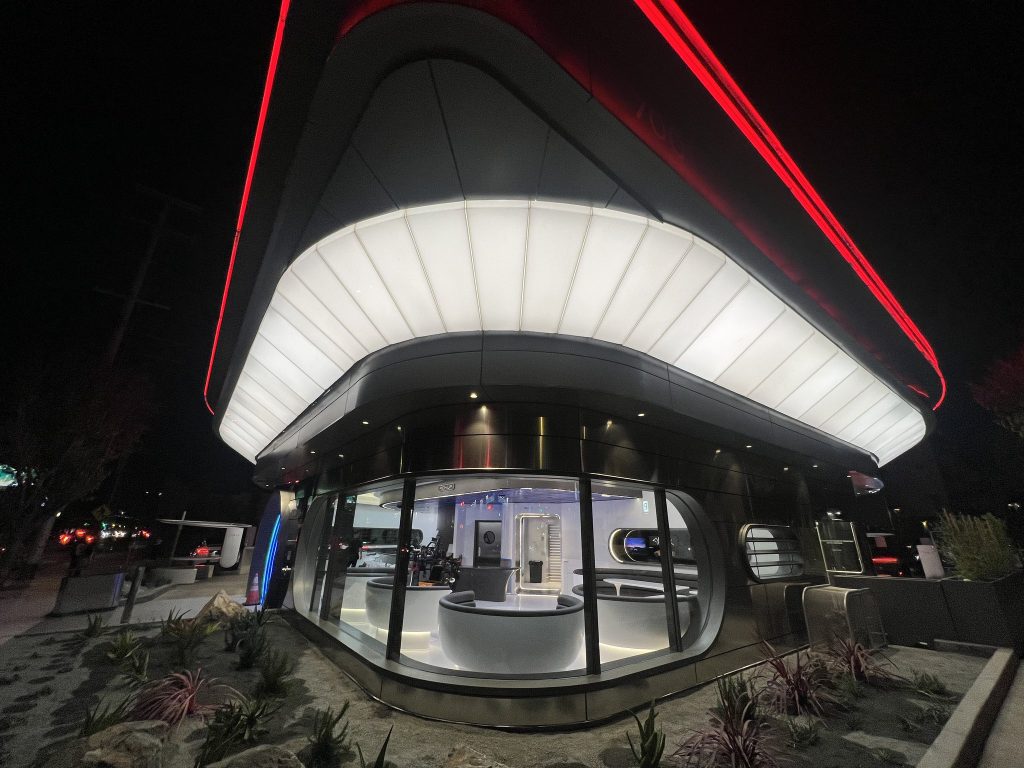
Credit: Brad Goldberg (via Sawyer Merritt on X)
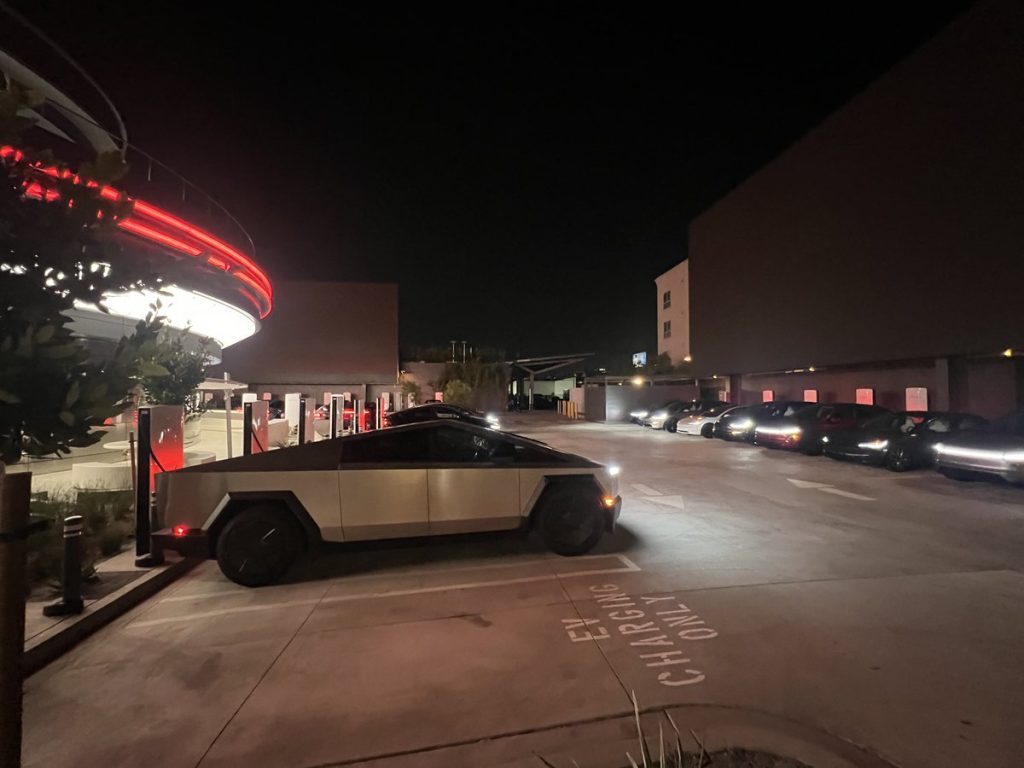
Credit: Brad Goldberg (via Sawyer Merritt on X)
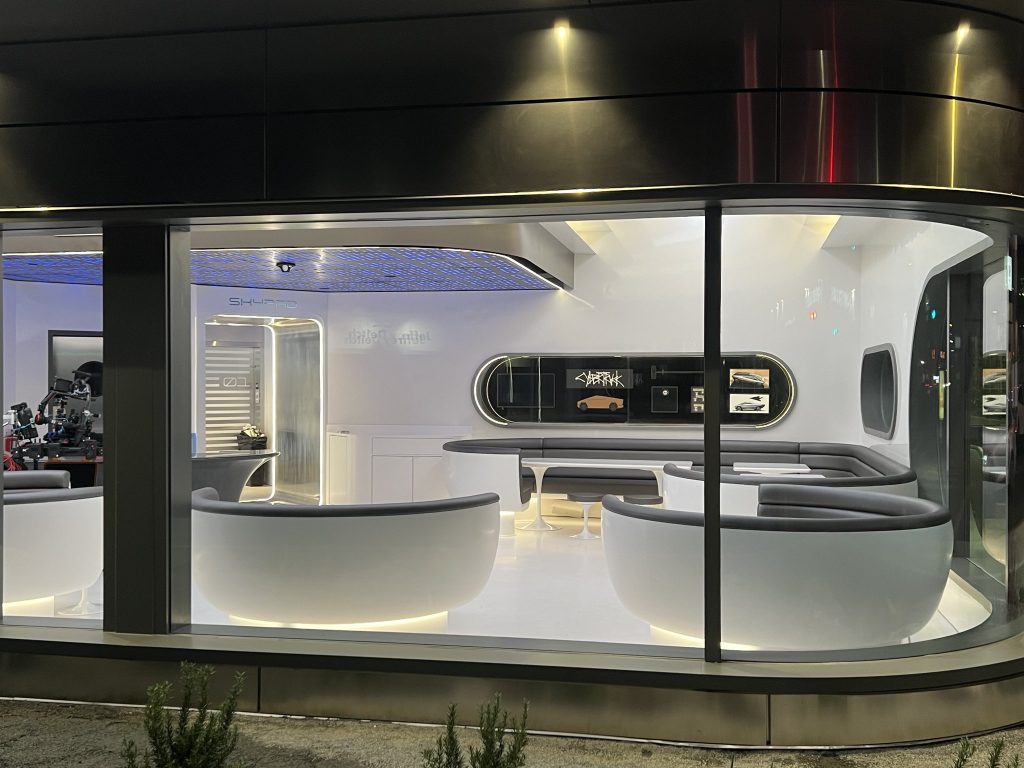
Credit: Brad Goldberg (via Sawyer Merritt on X)
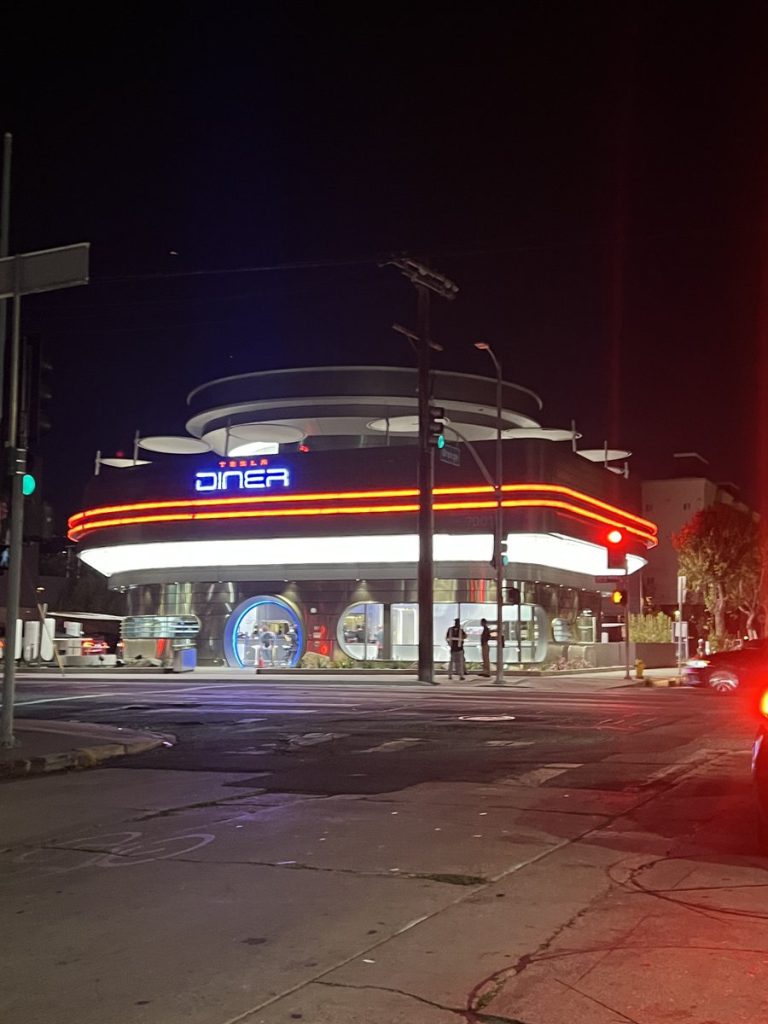
Credit: Brad Goldberg (via Sawyer Merritt on X)
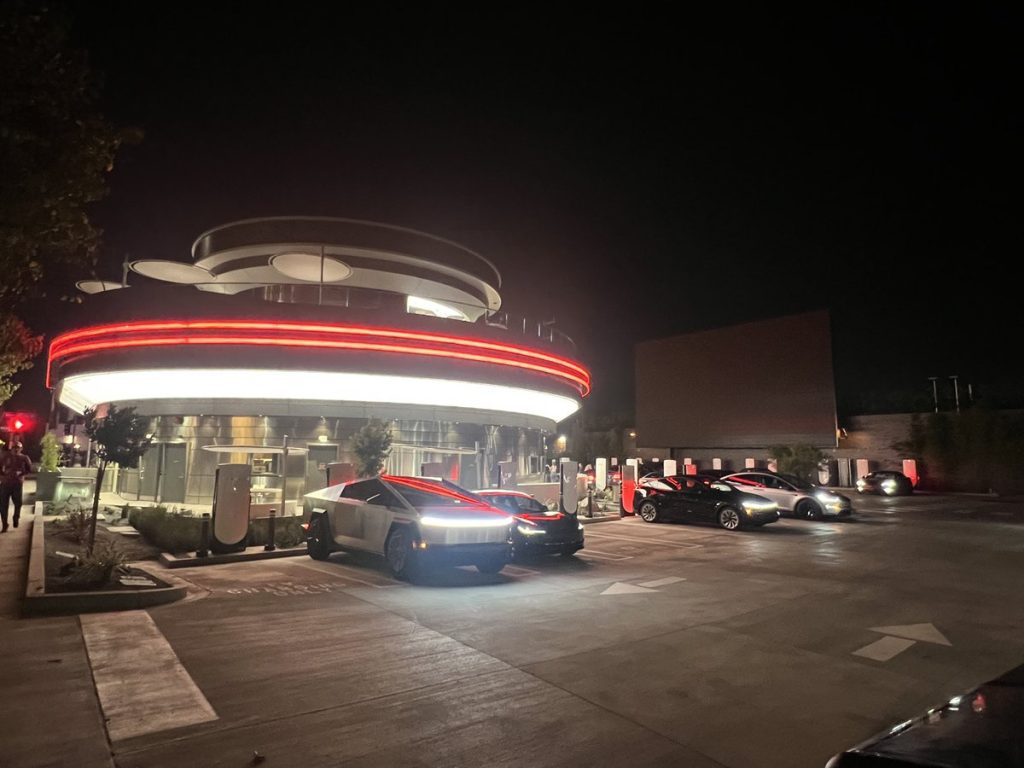
Credit: Brad Goldberg (via Sawyer Merritt on X)
READ MORE ON TESLA’S LA DINER: Tesla readies Drive-In Diner Supercharger for launch with app inclusion
When will the Tesla Diner open to external customers?
While it’s still not open to external customers yet, the news again suggests that the company could be close to an official opening date. Tesla first broke ground on the Diner in September 2023, after receiving a wave of building permit approvals throughout that year. Teslarati also covered much of the construction progress throughout last year, including when crews installed the first and second drive-in screens.
Located at 7001 West Santa Monica Boulevard, the idea was first discussed in 2018 by Musk and a few others on Twitter, featuring 1950s rock and roll, waiters on roller skates, and drive-in movie theater screens playing clips from some of history’s best movies. Notably, the photos of the front doors also show that the site will be open 24 hours a day, 7 days a week, whenever it does end up opening.
Tesla’s progress on Supercharger with diner, drive-in seen in aerial footage
-

 Elon Musk2 weeks ago
Elon Musk2 weeks agoTesla investors will be shocked by Jim Cramer’s latest assessment
-

 News2 days ago
News2 days agoTesla debuts hands-free Grok AI with update 2025.26: What you need to know
-

 Elon Musk4 days ago
Elon Musk4 days agoxAI launches Grok 4 with new $300/month SuperGrok Heavy subscription
-

 Elon Musk7 days ago
Elon Musk7 days agoElon Musk confirms Grok 4 launch on July 9 with livestream event
-

 News1 week ago
News1 week agoTesla Model 3 ranks as the safest new car in Europe for 2025, per Euro NCAP tests
-

 Elon Musk2 weeks ago
Elon Musk2 weeks agoxAI’s Memphis data center receives air permit despite community criticism
-

 News4 days ago
News4 days agoTesla begins Robotaxi certification push in Arizona: report
-

 Elon Musk2 weeks ago
Elon Musk2 weeks agoTesla scrambles after Musk sidekick exit, CEO takes over sales



















